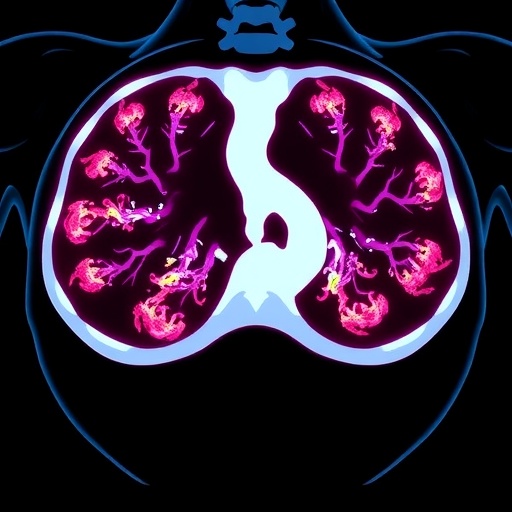
In the relentless battle against multiple myeloma, a particularly aggressive and treatment-resistant form of blood cancer, new hope is emerging from recent research conducted in the United Kingdom. Patients with triple class exposed (TCE), relapsed, and refractory multiple myeloma (RRMM) have historically faced limited therapeutic options and dismal prognoses. However, a cutting-edge investigational therapy known as elranatamab—a bispecific antibody targeting B-cell maturation antigen (BCMA)—is showing promising advancements over standard care practices. A landmark study comparing elranatamab’s real-world effectiveness against conventional treatments in the UK’s National Health Service (NHS) reveals meaningful improvements in progression-free survival, signaling a potential paradigm shift in managing this formidable disease.
Multiple myeloma is characterized by the malignant proliferation of plasma cells within the bone marrow, leading to immune dysfunction, bone damage, and severe systemic complications. Patients with triple class exposure have already been treated with the three major drug classes commonly used in MM management: proteasome inhibitors, immunomodulatory drugs, and anti-CD38 monoclonal antibodies. When these patients relapse or their disease becomes refractory to these treatments, conventional therapeutic avenues narrow dramatically. The urgent clinical need for innovative therapies that could extend survival and improve quality of life guided the research community toward exploring novel agents such as elranatamab.
Elranatamab functions as a bispecific antibody, a sophisticated form of immunotherapy engineered to simultaneously bind BCMA on myeloma cells and CD3 on T-cells, thereby directing the patient’s immune response specifically against malignant plasma cells. This precise mechanism harnesses the body’s own immune defenses to combat cancer, representing a strategic advancement over traditional chemotherapeutic approaches. Prior to this study, elranatamab’s efficacy and safety were demonstrated in MagnetisMM-3, a pivotal single-arm, multicenter phase 2 clinical trial, showcasing sustained responses among patients with RRMM.
.adsslot_xEmZGvc83V{width:728px !important;height:90px !important;}
@media(max-width:1199px){ .adsslot_xEmZGvc83V{width:468px !important;height:60px !important;}
}
@media(max-width:767px){ .adsslot_xEmZGvc83V{width:320px !important;height:50px !important;}
}
ADVERTISEMENT
The new study under discussion conducted a retrospective, observational analysis comparing outcomes from the MagnetisMM-3 cohort to a real-world control group drawn from five UK centers, representing routine clinical treatment paradigms between 2015 and 2023. Researchers meticulously matched patient characteristics and used robust statistical models, including inverse probability of treatment weighting in Cox proportional hazards frameworks, to adjust for confounding variables and derive comprehensive survival estimates. This methodological rigor aims to simulate the conditions of a randomized controlled trial, bolstering the validity of findings related to elranatamab’s comparative effectiveness.
From an initial pool of 5,535 multiple myeloma patients, only 81 met eligibility criteria for triple class exposed RRMM in the real-world cohort. Within this group, 13 distinct therapeutic regimens were employed, reflecting the heterogeneous nature of treatment approaches within clinical practice. The most prevalent regimen combined pomalidomide and dexamethasone, prescribed to approximately 48% of patients. Despite this array of interventions, survival outcomes remained bleak—the median progression-free survival (PFS) spanned a mere 3.71 months with a confidence interval ranging between 2.73 and 4.73 months. Overall survival (OS) was similarly limited, with a median of 11 months.
In stark contrast, patients administered elranatamab in the MagnetisMM-3 trial exhibited notable improvements. Unadjusted analyses revealed a statistically significant increase in progression-free survival, with a difference in restricted mean survival time (dRMST) approaching seven months. Overall survival analyses yielded hazard ratios favoring elranatamab, indicating a reduction in mortality risk by approximately one-third. When adjustments for baseline differences were applied, the beneficial effect on PFS persisted robustly, though the effect on overall survival became less definitive—a pattern underlining both the promise and the complexity in interpreting survival data from observational comparisons.
These findings hold profound clinical implications. For TCE RRMM patients—those for whom prior treatments have failed, and currently available therapies yield only transient benefits—elranatamab’s capacity to extend the time patients live without disease progression is a critical advance. Progression-free survival is widely recognized as a meaningful endpoint in oncology, often correlating with improved quality of life and delayed symptom burden. In this context, the data underscores the therapeutic potential of targeting BCMA and leveraging immune-mediated mechanisms to surmount resistance pathways in multiple myeloma.
The study’s incorporation of quantitative bias analysis further strengthens confidence in its conclusions. Recognizing the inherent limitations in observational research, such analysis evaluates the impact of potential unmeasured confounding variables. By demonstrating the robustness of elranatamab’s effect estimates to such biases, researchers provide reassurance that observed benefits are unlikely to be artifacts of hidden confounders. This meticulous scrutiny exemplifies the evolving landscape in oncology research, where real-world evidence increasingly complements randomized clinical trials to inform practice.
Importantly, this comprehensive UK-based investigation aligns with a global trend emphasizing the integration of precision immunotherapy into treatment algorithms for hematologic malignancies. While chimeric antigen receptor (CAR) T-cell therapies targeting BCMA have garnered attention, the logistical complexities of these approaches limit accessibility and immediacy. Bispecific antibodies like elranatamab offer a more readily deployable immunotherapeutic strategy, with potential for outpatient administration and scalable manufacture, potentially transforming care delivery.
The findings also emphasize the dire need for continued research into combinatory approaches incorporating elranatamab with other antimyeloma agents or immune modulators. Understanding mechanisms of resistance—both intrinsic and acquired—to BCMA-targeted therapies remains an active area of investigation. Furthermore, elucidating biomarkers predictive of response could refine patient selection, maximizing clinical benefits while minimizing unnecessary exposure to side effects.
Safety considerations, while not the primary focus of the comparative study, remain paramount. Previous MagnetisMM-3 data indicated manageable adverse events, particularly cytokine release syndrome, a common risk with T-cell engaging immunotherapies. Continued pharmacovigilance and real-world safety monitoring will be essential as elranatamab progresses toward broader regulatory approvals and clinical adoption.
Beyond clinical outcomes, patient experiences and quality of life metrics will be important to capture in future assessments. The toxicities and logistical burdens of prior MM treatment lines often degrade physical and psychological wellbeing. Therapies like elranatamab, if able to prolong remission with tolerable side effect profiles, could redefine survivorship paradigms for this hard-to-treat population.
As elranatamab enters the therapeutic landscape, healthcare systems and policymakers face the challenge of ensuring equitable access. The high costs generally associated with novel immunotherapies necessitate thoughtful resource allocation and reimbursement frameworks. Collaborative efforts among clinicians, researchers, patient advocacy groups, and industry stakeholders will be needed to maximize treatment dissemination.
In conclusion, the UK-based comparative analysis provides compelling real-world evidence that elranatamab extends progression-free survival in patients with triple class exposed relapsed and refractory multiple myeloma beyond what current standard-of-care therapies achieve. These results herald a new chapter in immunotherapy for multiple myeloma, underscoring the transformative potential of bispecific antibodies targeting BCMA. As ongoing trials and real-world data accrue, the oncology community eagerly anticipates further validation of elranatamab’s role in altering the grim trajectory of this challenging disease.
Subject of Research:
Comparison of treatment outcomes in triple class exposed relapsed and refractory multiple myeloma patients receiving elranatamab versus standard real-world therapies in the UK.
Article Title:
Comparison of outcomes with elranatamab and real world treatments in the UK for triple class exposed relapsed and refractory multiple myeloma
Article References:
Tsang, C., O’Reilly, J.E., Carpenter, L. et al. Comparison of outcomes with elranatamab and real world treatments in the UK for triple class exposed relapsed and refractory multiple myeloma. BMC Cancer 25, 1219 (2025). https://doi.org/10.1186/s12885-025-14624-9
Image Credits: Scienmag.com
DOI: https://doi.org/10.1186/s12885-025-14624-9
Keywords:
Elranatamab, multiple myeloma, triple class exposed, relapsed refractory, BCMA, bispecific antibody, progression-free survival, overall survival, immunotherapy, real-world evidence, MagnetisMM-3, NHS UK, hematologic malignancy
Tags: advancements in blood cancer treatmentsB-cell maturation antigen targetingbispecific antibody therapy for cancerElranatamab multiple myeloma treatmentimproving quality of life in myelomainnovative therapies for relapsed myelomaNational Health Service myeloma studyprogression-free survival in myelomarefractory multiple myeloma solutionstherapeutic options for aggressive blood cancerstriple class exposed myeloma patientsUK real-world myeloma research






